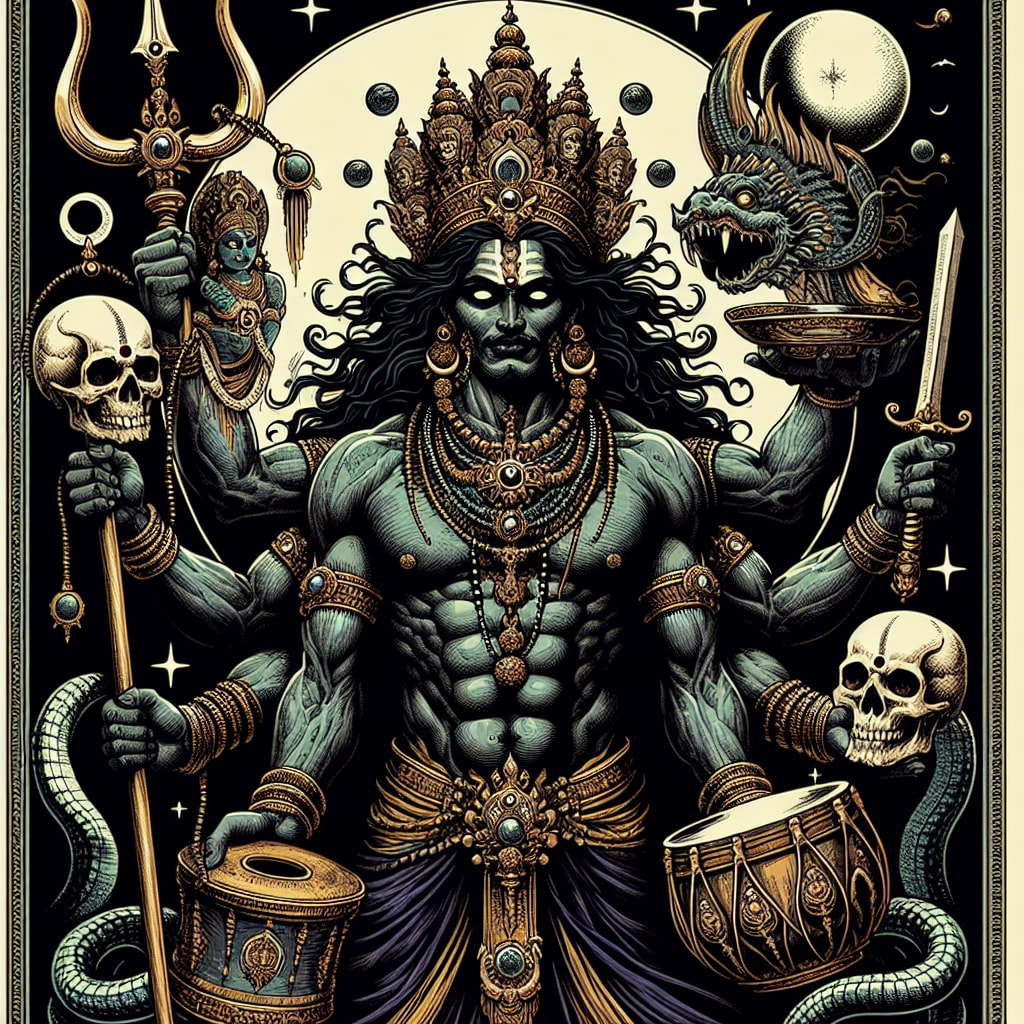Mahākāla, a complex deity in Hinduism, does not feature prominently in the Bhagavad Gita or the Mahabharata, but his manifestation and philosophical implications penetrate the broader spectrum of Hindu philosophy and religion, thereby influencing these texts indirectly.
In Sanskrit, Mahākāla means "Great Time" or "Death," representing the ultimate destroyer. His association with time signifies the transient nature of life, a notion deeply entrenched in Hindu cosmology. The Bhagavad Gita and the Mahabharata, although not mentioning Mahākāla directly, echo this understanding of the relentless passage of time and life's temporal realities.
In the context of Hindu iconography and literature, Mahākāla is often portrayed as a dark, ferocious, three-eyed god. The deity is believed to embody the eternal aspect of time that oversees the cosmos's cyclical nature, underlining the perpetual dance of creation, sustenance, and destruction. This theme is an underlying principle in the Bhagavad Gita, particularly where Lord Krishna imparts lessons about life and death, the eternal soul, and the cyclical nature of the universe to Arjuna.
In the Mahabharata, the epic battle of Kurukshetra, where clans fight against each other resulting in much destruction, indirectly illustrates the role of time and death, embodying the principles of Mahākāla.
Although the characters and narratives from the Bhagavad Gita and the Mahabharata do not engage explicitly with Mahākāla, the deity's theological standpoint and the philosophical principles it embodies pervade the wisdom of these texts, deeply rooted in the Hindu philosophical tradition.

